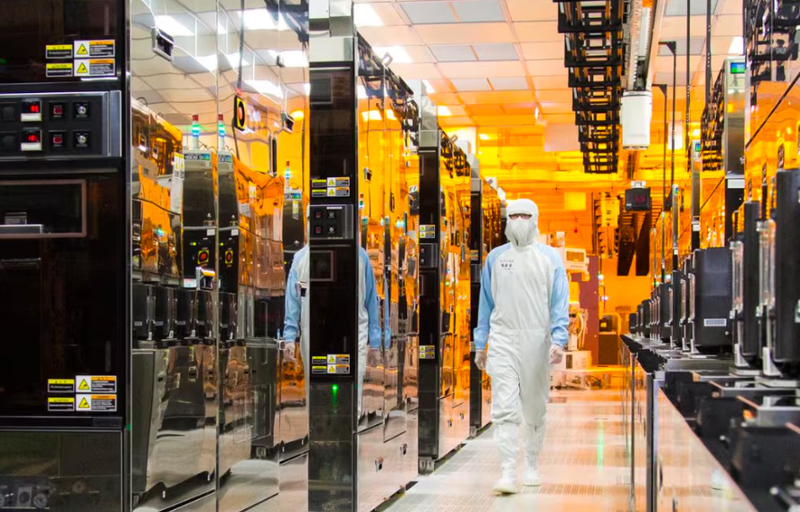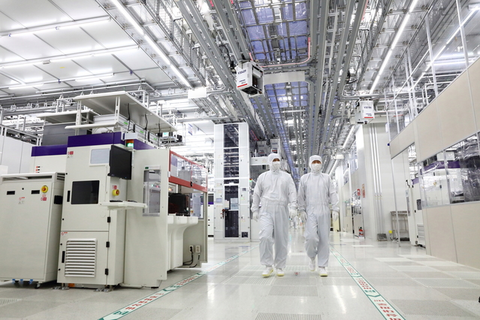Micron Rides HBM Boom to Record Quarterly Revenue, Closing in on No. 2 Samsung
Input
Modified
HBM Sales Up 50%, Shipments Made to Four Major Clients Following SK Hynix, Announces Full Allocation of Next Year’s Supply Market Share Expected to Jump from 5% to 25%, Confident in Tech Competitiveness.

Micron, which held just a 5% share of the High Bandwidth Memory (HBM) market until last year, is now shaking up the industry landscape. In its latest earnings report, the world’s third-largest memory chipmaker announced that it is supplying large volumes of HBM to four major clients, including AI chip giants Nvidia and AMD. Micron stated with confidence that it aims to raise its HBM market share to around 25%,a level similar to its overall DRAM market share,by the second half of this year. Having trailed behind SK Hynix and Samsung Electronics, Micron is signaling a clear intent to break the two-company dominance and establish itself as a key HBM supplier.
Micron Posts 50% Surge in Q3 HBM Revenue, Delivers Earnings Surprise
On June 25 (local time), Micron highlighted during its fiscal 2025 third-quarter (March to May) earnings call that its HBM competitiveness was a key driver behind its strong performance, maintaining a confident tone throughout. Third-quarter revenue rose 37% year-over-year to USD 9.3 billion, while operating profit jumped 165% to USD 2.49 billion, beating market expectations. HBM revenue surged about 50% from the previous quarter, leading the strong results, and DRAM sales also hit a record high of USD 7.07 billion.
Micron stated during the earnings call, “We expect to achieve an HBM market share close to our overall DRAM market share in the second half of this year,” adding that “the yield and shipment ramp-up of our 12-high HBM3E (fifth-generation HBM) is progressing very smoothly, and we anticipate reaching a shipment inflection point during the fourth quarter.” Micron had previously projected achieving this HBM share by year-end but revised the timeline to the second half during this earnings release. It is now likely that the target could be met as early as this third quarter (July to September).
According to Micron, its entire HBM production for next year is already sold out. CEO Sanjay Mehrotra stated, “HBM supply for this year and next year is already sold out,” predicting, “For fiscal 2024 (September 2023 to August 2024), HBM revenue will reach hundreds of millions of dollars, and for fiscal 2025 (September 2024 to August 2025), it will generate billions of dollars in revenue.” He added, “We are on track to achieve an HBM market share at the level of our DRAM share in 2025.”
He further emphasized, “In this transformative era where artificial intelligence (AI) is driving unprecedented demand for high-performance memory and storage, Micron is uniquely well-positioned to seize the opportunity,” adding, “With the field-proven success of our HBM3E, we’ve gained the trust of major HBM customers and are delivering the industry’s lowest power and highest performance HBM.” Micron expressed confidence that it has moved beyond reliance on specific customers and is now targeting both graphics processing unit (GPU) and application-specific integrated circuit (ASIC) platforms, securing major clients in the AI chip market.

Micron Becomes Sole Supplier of ‘Second HBM’ to Nvidia
Micron has solidified its position as a key supplier to Nvidia, which holds 80% of the AI accelerator market, by proving its technological strength in HBM3E, this year’s flagship product. Following SK Hynix and ahead of Samsung Electronics, Micron became the second in the industry to supply HBM3E to Nvidia. Samsung has yet to supply HBM3E to Nvidia. Brokerage firms estimate Micron’s HBM revenue for Q3, which hit a record high, to be around USD 1.5 billion. This is roughly one-third of SK Hynix’s estimated HBM revenue for Q2 (March to June), which is in the mid-to-high USD 4.6 billion range. Micron stated, “Yields and production volumes for our 12-high HBM3E products are improving very smoothly, and in Q4, shipment volume for the 12-high products will surpass that of the 8-high products.”
Additionally, Nvidia reportedly selected Micron as the first supplier of SOCAMM (System-On-Chip Attached Memory Module), a next-generation memory module. SOCAMM, made by stacking the latest low-power DRAM (LPDDR5X), is drawing attention as a potential “second HBM.” While HBM supports GPUs in AI accelerators, SOCAMM is DRAM attached to CPUs. Though installed on the CPU that controls the entire system, its primary role is to assist AI accelerators in achieving peak performance. SOCAMM will be included in Nvidia’s next-generation AI accelerator “Rubin,” set for release next year.
Unlike HBM, which vertically connects DRAM using through-silicon vias, SOCAMM uses wire bonding to link 16 chips with copper wiring. Copper’s high thermal conductivity helps minimize heat generation from each DRAM chip, making it a key competitive advantage. Micron promoted that its latest low-power DRAM offers 20% better power efficiency than competitors. Nvidia’s next-generation AI servers will feature four SOCAMM modules, totaling 256 LPDDR5X chips. Experts cite Micron’s later adoption of EUV lithography as a reason for its faster delivery. Unlike competitors who boosted DRAM performance through EUV, Micron achieved low-heat technology through architectural innovation.
Industry watchers expect Micron to leverage this low-heat technology to increase its HBM market share. As HBM generations advance, more DRAM layers are stacked, inevitably leading to more heat. The three major memory makers will begin mass production of 12-high HBM4 in the second half of this year and 16-high HBM4 in the first half of next year. An equipment manufacturer CEO said, “Micron entered the HBM market late but can catch up quickly by leveraging its thermal management technology and advantage as a US company.”
Micron’s Surge Poses a Threat to Samsung Electronics
Samsung Electronics is feeling the pressure from Micron’s rapid ascent. According to market research firm TrendForce, Samsung lost its DRAM market leadership for the first time in 33 years to SK Hynix in Q1 of this year. SK Hynix’s market share reached 36.0%, driven by continued HBM shipment growth. Micron, in third place, followed closely with a 24.3% share, narrowing the gap with Samsung (33.7%) to under 10 percentage points. The gap had been about 17 points in Q4 last year when Samsung held 39.3% and Micron 22.4%.
Samsung was also dealt another blow in April when Micron received approval to supply 12-high HBM3E to Nvidia. Previously, SK Hynix was the exclusive supplier of 12-high products, but Micron’s entry broke the monopoly. Nvidia is using this product in its latest AI GPU architecture, “Blackwell Ultra (GB300).”
According to Bloomberg, Samsung began supplying 8-high HBM3E to Nvidia earlier this year. However, the industry’s primary focus now is on the more advanced 12-high product. While Samsung and Nvidia continue discussions about 12-high HBM3E, approval is still pending. A Micron representative stated, “Our HBM production volume is still small, but we lead in specifications,” adding, “Yield rates are improving to the point where by the end of this year, our HBM market share could approach our overall DRAM market share (around the low-to-mid 20% range).”
Micron also announced a massive USD 200 billion investment plan on June 12, the largest in semiconductor industry history. Of this, USD 14 billion is allocated for DRAM facilities including HBM this year. Backed by its advantage as a US-based company, Micron is attracting global investors in this capital-intensive competition, posing a serious threat to Samsung Electronics.





















